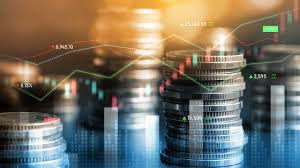
ONE of the many technologies that has disrupted the global financial markets is automated or algorithmic trading.
The increased demand for speedy, reliable, and effective order execution, as well as reduced transaction fees, is expected to fuel the global growth of automated or algorithmic trading.
Automated trading refers to the use of a computer programme or software to create orders and automatically submit them to a market or exchange.
Automated trading systems and electronic trading platforms can execute repetitive tasks at speeds with orders of magnitude greater than any human equivalent.
For example, many hedge funds make use of “algorithmic trading”, which is a fully automated order entry based on a computer trading model.
It is also worth noting that more than 75% of the stock shares traded on the New York Stock Exchange and NASDAQ originate from automated trading system orders.
These systems can be designed to trade foreign currency (forex), stocks, options and futures based on a predefined set of rules, which determine when to enter an order, when to exit a position and how much money to invest in each trading product.
Trading strategies vary, with some being designed to pick market tops and bottoms, while others follow a trend or involve some complex random approaches.
- Zimind, Nedbank to host listed companies awards ceremony
- Caledonia gold production shoots up by 11%
- Piggy’s Trading & Investing Tips: Cards or shares?
- Piggy’s Trading & Investing Tips: Binary options a new financial market tool
Keep Reading
When a predetermined signal emerges, the software places a trade automatically. An expert advisor (EA) is an automated trading system, which automatically opens and closes trades based on pre-set or programmed rules.
Several professional traders have found EAs to be of benefit. EAs are programmed to work in multiple ways.
For example, by utilising a selection of technical indicators, such as the moving average indicator, or the MACD — moving average convergence/divergence indicator and searching for necessary trends and breakouts, EAs can analyse the market, as well as the behaviour of individual financial instruments and can generate a signal about trading opportunities.
Another type of automated trading system is a forex robot which, like an EA is a programme that can identify market patterns and generate trading signals.
However, unlike an EA, a forex robot can automatically trade on your behalf. An EA, on the other hand, will always require a trader to manually authorise a trade.
When using strict definitions, the difference between an EA and a forex robot is that an EA will generate signals while a Forex Robot will perform trades without any manual sign-off required.
However, the terms are often used interchangeable, which means that many so-called expert advisors are capable of far more than just generating signals.
As with any automated software, EAs and forex robots reduce the chance of making emotional and irrational trading decisions. EAs and forex robots follow a very strict and consecutive plan, free from any human intervention.
Advantages of robot trading/EAs
Automated trading minimises emotions in the trading process. By keeping emotions in check, traders typically have an easier time sticking to the plan. Human emotions sometimes tend to cloud decision-making and can lead a trader to deviate from a set strategy. Robots do not have any emotional components and are wired to stick to system commands.
Robot trading preserves discipline. The fact that the trade rules are established, and trade execution is performed automatically means that discipline is preserved even in volatile markets. Discipline is often lost due to emotional factors, such as fear of taking a loss.
A robot is not prone to human error. Being human also entails making mistakes. This can be in the form of making wrong calculations in position-sizing or entering an extra zero in the trade lot size. Such errors can be avoided when using a forex robot.
Robots are consistent. One of the biggest challenges in trading is to plan the trade and trade the plan. Automated trading systems allow traders to achieve consistency by trading the plan.
Improved order entry speed. Since computers respond immediately to changing market conditions, automated systems can generate orders as soon as trade criteria are met. Getting in or out of a trade a few seconds earlier can make a big difference in the trade’s outcome.
Disadvantages of robot trading/EAs
Mechanical failures: The theory behind automated trading makes it seem simple. However, automated trading is a sophisticated method of trading. Depending on the trading platform, a trade order could reside on a computer – and not a server. What that means is that if an internet connection is lost, an order might not be sent to the market. There could also be a discrepancy between the “theoretical trades” generated by the strategy and the order entry platform component that turns them into real trades.
Automated trading systems require monitoring. This is due to the potential for mechanical failures, such as connectivity issues, power losses or computer crashes. It is possible for an automated trading system to experience anomalies that could result in errant orders, missing orders, or duplicate orders.
Lack of creativity: Robots only follow structures. Most Robots use a set of instructions to trade. For instance, they are set to sell if the price dropped to a fixed rate and buy at a particular point.
There is need for thorough research when identifying the best EAs or robots. Before settling on one there is need to make sure that it is certified and legitimate.
In conclusion, whether one decides to apply their own expertise, purchase, rent or code a forex robot, the bottom line is that robots do not sleep.
One of the characteristics of the FX market is that it is open 24 hours a day.
However, humans cannot possibly stay up all day and night throughout the trading week just to keep track of price action.
A forex robot can be programmed to watch market movements without the need to rest or even take breaks.
The robot simply follows a set of rules based on technical indicators or price action and can execute trades automatically.
- Matsika is a corporate finance specialist with Switz View Wealth Management. — +263 78 358 4745/ batanaim@switzview.com










